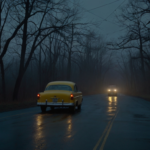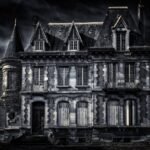Nightmares have been a staple in horror narratives for as long as stories have been told. These terrifying dreams not only tap into our deepest fears but also provide a rich source of material for writers and filmmakers. This article explores the significance of nightmares in horror, their psychological underpinnings, and their pervasive influence on the genre. By examining real-life examples and notable works of horror fiction, we will uncover why nightmares are such a powerful and enduring theme.
The Nature of Nightmares
Nightmares are distressing dreams that often wake the sleeper, leaving them with lingering feelings of fear, anxiety, and unease. Unlike ordinary dreams, nightmares are vivid and intense, making them particularly memorable. The content of nightmares typically includes scenarios that threaten the dreamer’s safety, security, or sanity, such as being chased, falling, or facing a monstrous entity.
Psychological Significance of Nightmares
From a psychological perspective, nightmares serve as a window into the subconscious mind. They often reflect unresolved fears, traumatic experiences, and deep-seated anxieties. According to Sigmund Freud’s psychoanalytic theory, dreams, including nightmares, are manifestations of repressed desires and thoughts. Carl Jung, another prominent psychologist, believed that nightmares are a way for the unconscious mind to communicate with the conscious self, often highlighting aspects of the psyche that need attention or resolution.
Nightmares in Horror Narratives
- Classic Literature and FolkloreNightmares have long been a theme in literature and folklore, serving as both a plot device and a means of exploring human psychology. In Mary Shelley’s “Frankenstein,” Victor Frankenstein’s recurring nightmares symbolize his guilt and the monstrous consequences of his scientific hubris. Similarly, in Bram Stoker’s “Dracula,” nightmares plague the characters, foreshadowing the vampiric threat and revealing their subconscious fears.Folklore from various cultures is rife with stories of nightmarish creatures and experiences. For example, the concept of the “Mare” in Scandinavian folklore, a malicious entity that sits on the chest of sleepers, causing suffocating nightmares, is echoed in the modern term “nightmare.” These stories often serve to explain the unexplainable and provide a cultural framework for understanding fear and anxiety.
- Modern Horror Films : Modern horror films frequently utilize nightmares to heighten tension and delve into characters’ psyches. One of the most iconic examples is Wes Craven’s “A Nightmare on Elm Street” series. The films revolve around Freddy Krueger, a vengeful spirit who attacks teenagers in their dreams, leading to real-world deaths. The series explores the blurred line between dreams and reality, emphasizing the terrifying notion that nightmares can have deadly consequences.Another notable example is “The Babadook,” directed by Jennifer Kent. The film centers on a mother and son who are haunted by a sinister presence linked to a disturbing children’s book. The mother, Amelia, experiences horrifying nightmares that symbolize her grief and unresolved trauma over her husband’s death. These nightmares blur into her waking life, illustrating the psychological impact of unresolved emotional pain.
- Television and Streaming Series : Television series have also explored the theme of nightmares extensively. In “The Haunting of Hill House,” created by Mike Flanagan, the characters are tormented by nightmarish visions and experiences that reveal their deepest fears and past traumas. The series masterfully interweaves nightmares with the supernatural, creating a chilling atmosphere that keeps viewers on edge.In “Stranger Things,” the Upside Down, a nightmarish parallel dimension, represents the characters’ worst fears and traumas. The show’s use of nightmares serves to heighten the sense of danger and the psychological toll on the characters as they confront their deepest anxieties.
Real-Life Examples of Nightmares Influencing Horror
- H.P. LovecraftH.P. Lovecraft, a seminal figure in horror literature, drew heavily from his own nightmares to craft his stories. Lovecraft’s dreams were filled with bizarre, otherworldly landscapes and monstrous beings, which became central elements in his works. His story “The Call of Cthulhu,” for example, was inspired by a particularly vivid nightmare of a giant, monstrous creature. Lovecraft’s ability to translate his nightmarish visions into prose has had a lasting impact on the horror genre, influencing countless writers and filmmakers.
- Stephen KingStephen King, often dubbed the “Master of Horror,” has frequently mentioned how his nightmares inspire his stories. King’s novel “It” features the terrifying entity Pennywise, a shape-shifting monster that exploits children’s fears, often appearing in their nightmares. The concept of a monster that can invade and manipulate dreams adds a layer of psychological horror to the story, making it profoundly unsettling.
- Wes CravenWes Craven, the creator of “A Nightmare on Elm Street,” was inspired by real-life accounts of people who died in their sleep after experiencing severe nightmares. These stories, reported in the 1980s, involved refugees from Southeast Asia who died in their sleep with no apparent cause, often following intense nightmares. This real-life mystery intrigued Craven and led to the creation of Freddy Krueger, a villain who embodies the fear of dying in one’s sleep.
The Role of Nightmares in Character Development
In horror narratives, nightmares often serve as a tool for character development. By exposing characters’ deepest fears and vulnerabilities, nightmares provide insight into their psyche and motivations. This, in turn, creates a deeper emotional connection between the audience and the characters.
- Trauma and Grief: Nightmares are frequently used to explore themes of trauma and grief. In “The Babadook,” Amelia’s nightmares are a manifestation of her suppressed grief and guilt over her husband’s death. The film uses these nightmarish sequences to depict her psychological unraveling and eventual confrontation with her emotions. This adds a layer of emotional depth to the horror, making it more than just a series of scares.
- Guilt and Regret : Nightmares can also symbolize a character’s guilt and regret. In “American Werewolf in London,” David, the protagonist, is haunted by nightmarish visions of the people he has killed as a werewolf. These nightmares serve as a constant reminder of his actions and the horror he has become, driving the narrative towards its tragic conclusion.
- Fear of the Unknown : The fear of the unknown is a common theme in horror, and nightmares are an effective way to explore this. In “The Ring,” the cursed videotape causes nightmarish visions that foreshadow the viewer’s impending doom. These nightmares heighten the sense of dread and uncertainty, making the horror feel inescapable.
The Blurring of Dream and Reality
One of the most unsettling aspects of nightmares in horror is the blurring of the line between dream and reality. This creates a sense of disorientation and helplessness in both the characters and the audience.
- Inception of Horror : Films like “A Nightmare on Elm Street” play with the idea that the events of the nightmare can bleed into the real world. This creates a terrifying scenario where the characters are never truly safe, even when they are awake. The blending of dream and reality keeps the audience on edge, as they can never be sure what is real and what is not.
- Psychological Horror : Psychological horror often employs nightmares to blur the boundaries between reality and illusion. In “Jacob’s Ladder,” the protagonist Jacob is haunted by nightmarish visions that seem to invade his waking life. These disturbing experiences reflect his deteriorating mental state and the trauma he endured during the Vietnam War. The film uses these nightmarish sequences to create a sense of unreality and paranoia, heightening the psychological horror.
Cultural Variations in Nightmares and Horror
Different cultures have their own unique interpretations of nightmares and their role in horror. These cultural variations add richness and diversity to the genre.
- Japanese horror, or “J-horror,” often incorporates nightmarish elements that draw on traditional folklore and superstitions. Films like “Ringu” and “Ju-on: The Grudge” feature vengeful spirits that invade dreams and waking life alike. These spirits, often linked to unresolved traumas or curses, reflect cultural beliefs about the supernatural and the afterlife.
- African folklore, nightmares are sometimes attributed to witchcraft or malevolent spirits. Stories of the “Tokoloshe,” a mischievous and dangerous spirit that can cause nightmares and physical harm, are common in Southern African cultures. Horror narratives that draw on these traditions, such as “The Tokoloshe,” use nightmares to explore themes of fear and superstition.
- Western horror often uses nightmares to explore psychological and existential fears. Films like “The Exorcist” and “Rosemary’s Baby” use nightmarish sequences to delve into themes of possession, paranoia, and the loss of control. These nightmares reflect broader societal anxieties about the unknown and the uncontrollable.
Conclusion
Nightmares play a crucial role in horror narratives, serving as both a plot device and a means of exploring deep psychological themes. By tapping into our subconscious fears and anxieties, nightmares create a powerful and visceral sense of horror that resonates with audiences. Whether through literature, film, or folklore, the enduring appeal of nightmares in horror lies in their ability to confront us with our darkest fears and challenge our perceptions of reality. As long as humans continue to dream, nightmares will remain a rich source of inspiration for the horror genre, providing endless opportunities to explore the complexities of the human psyche.


















































